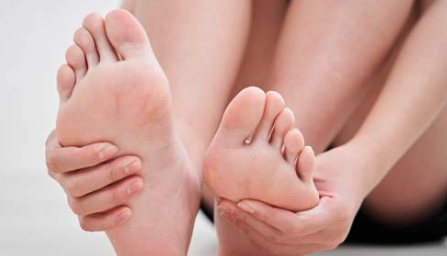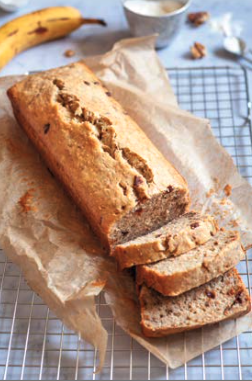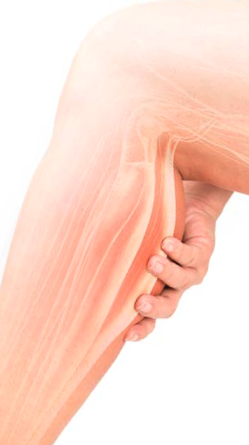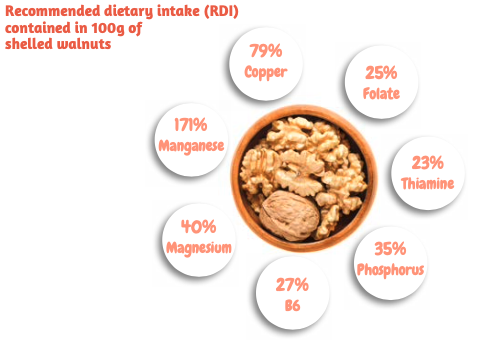“My feet are killing me!” Is this your main thought when taking your first steps in the morning, or after sitting for a while? Maybe the discomfort increases after exercise? Does the pain strike the bottom of your heel, or you feel aching or burning along your arch? You may have plantar fasciitis, a common cause of foot pain.WHAT IS IT AND HOW DOES IT HAPPEN?
The plantar fascia is a tough, fibrous band that helps to create and support the arches of your feet. It originates at the bottom of your heel bone and inserts at the ball of your foot. When you run your hand from your heel to your toes, the fascia is the tight tissue you feel in-between. This condition is chronic; it develops slowly, and then persists. It’s closer to an overuse injury like tennis elbow, than a sudden injury like a sprained ankle. Both inflammation and long term tissue changes can cause this condition. Some factors can increase the likelihood, such as:
Your arches work hard − think of your feet acting like mini trampolines − flexible and strong. As you step, your foot joints move and the arch tenses, providing both mobility and rigidity. As your foot then swings through the air, its arch unwinds... until the next step. The cycle then continues. Walking or running on hard surfaces, walking too fast or too long and wearing non-supportive shoes can aggravate the condition. CAN IT BE TREATED? This leads us to the question that’s probably on your mind − how can you treat plantar fasciitis? Rest is important. Ice treatment may help; try freezing an incompletely filled water bottle, wrap it in a towel and roll it back and forward under your arch with pressure. Stretch daily − with your leg extended, place a towel under the ball of your foot and hold the ends in either hand. Pull towards your body, creating a stretch through the foot. Foot pain may also be associated with other joint pain, including the back, knee and hip. Ask your chiropractor for their advice on the cause, if other joints are contributing to your pain, and what treatment is appropriate. Remember, plantar fasciitis is a chronic condition that will take time and care to resolve.
0 Comments
How could bursting bookcases, disorderly desks and chaotic cupboards impact on our health? You may think external factors don’t affect our wellbeing, but our environment has always profoundly influenced our health. Recently, research has begun to ‘unpack’ how cluttered surroundings affect our wellbeing.It seems that chaos around us triggers chaos within us.
Multiple studies have shown that people in messy environments are more likely to choose unhealthy food and eat more than those in tidy ones. Participants whose houses were clean and tidy were also more active and had better overall health. The impact for weight gain is obvious. Other research has found that unfinished, cluttered or messy homes can make us more likely to feel stressed, anxious and depressed; whereas those with a neat home experienced the opposite. Continuous stress can affect our immunity and digestion, leading to a greater risk of illness and disease. Clutter also reduces productivity. There’s only so much information we can absorb in each moment. Our brains like order, and too much stimuli entering our visual field reduces our ability to focus. An untidy desk then, can distract us from our work, affect memory, and reduce productivity. The notion that clutter has adverse health impacts has grown over recent years, the evidence bears this out. Weight gain, reduced productivity, and anxiety are only three potential consequences. Think about your home and workplace. Do you have unneeded items creating clutter? Do you often spend time hunting for lost items, or ever trip up over the mess? Maybe it’s time for a sort out. As you discover a clean and tidy environment, you’ll also revitalise your body and mind. 19/5/2021 0 Comments Banana walnut loafThis tasty, moist loaf doesn’t have any added sugar – the ripe bananas make it naturally sweet. It makes a great snack for HRlIuTnIcShboxes or for morning/afternoon tea.INGREDIENTS
3 large ripe bananas, mashed 2 eggs 1/2 cup olive or walnut oil 1⁄4 cup milk 1 tsp vanilla extract 1 tsp ground cinnamon 1 cup wholemeal flour 1 cup rice flour 3⁄4 cup walnuts, chopped 1 tsp baking powder 1 tsp baking soda Pinch salt INSTRUCTIONS
Store in an airtight container in a cool, dark place for up to three days, or in the fridge for up to five days. It also freezes well. 19/5/2021 0 Comments Explaining muscle crampsHave you ever experienced the unexpected spasm of a cramp − that painful, involuntary contraction that you panic to get rid of? Muscle cramps are common. Night-time calf cramps afflict approximately one-third of Australian adults. Many of us have seen sportspeople fall to the ground with cramp, unable to continue competition.WHAT EXACTLY IS MUSCLE CRAMP?
Your skeletal muscles − those that move your body − are made of bundles of fibres. When we tighten a muscle consciously, our muscle fibres contract − think about when you flex your bicep and a muscular bulge shows on your upper arm. Sometimes, though, a muscle will contract without conscious thought. It’s like it has a mind of its own, and when it does so vigorously, as happens with cramp, it’s painful. Symptoms include sudden pain that lasts from several seconds to a number of minutes. Stiffness, muscle bulging or an obvious muscle knot might be felt. The area can remain sore for several days. Once cramp has occurred, you’re more likely to experience further cramping within the next eight hours. WHY DO THEY HAPPEN? Unfortunately, it’s a question without an easy answer. The most common type of cramp is known as idiopathic. In short, it happens spontaneously and we don’t know why. There are some conditions or scenarios that may make cramp more likely: ageing, muscle fatigue, athletic exertion, dehydration, pregnancy, and certain illnesses and diseases. DEALING WITH MUSCLE CRAMPS The best immediate action you can take is to lightly stretch the affected muscle. There are some steps that may aid in prevention; such as massage, regular stretching, and having plenty of fluids. Correcting poor posture can also help. Some people report that they feel relief through supplementing with magnesium, though the research on this is not conclusive. Cramp can negatively impact your quality of life. If you experience these intense spasms regularly, or would like to know more, speak to your chiropractor. 19/5/2021 0 Comments Walnuts – health in a nutshellWalnuts are wrinkled, brain-shaped brown nuts – actually, a botanist might tell you they’re technically seeds – which grow on trees and come in hard shells. They’re versatile, tasty, can be eaten raw or toasted, and are widely used in both sweet and savoury recipes.WHAT’S IN A WALNUT?
Like other nuts, most of the kilojoules in walnuts come from fat, but these are considered ‘good’ fats – high in omega fatty acids and polyunsaturated fats. They contain little saturated fat and no cholesterol. This fat profile helps to increase HDL (‘good’) cholesterol and lower LDL (‘bad’) cholesterol. Don’t be deceived by their unassuming appearance; they’re also incredibly dense in many essential minerals and vitamins, and have strong antioxidant and anti- inflammatory properties which can help reduce risk and improve symptoms for a range of chronic and acute conditions. Walnuts are around 15% protein and high in dietary fibre. In short, they’re very good for you. LATEST RESEARCH ON HEALTH BENEFITS OF WALNUTS Heart disease, stroke and cancer consistently give us the highest global death rate of any diseases. This also means that these diseases are at the forefront of research into prevention and treatment. Recent research into the potential health benefits of walnuts had exciting results. Researchers expected that walnuts would help to reduce people’s cholesterol levels, directly reducing their risk of cardiovascular disease. In fact, the people who consumed higher amounts of walnuts were found to have dramatically reduced inflammatory markers in the blood, indicating that walnuts can help to reduce chronic inflammation. This could have beneficial implications for the wide range of conditions associated with chronic inflammation, such as cancer, heart disease, type 2 diabetes, arthritis and more. We know that many diseases are often preventable and that there are simple – though not always easy – steps to take to reduce our risk through a healthy lifestyle. The nutrient profile and research on walnuts suggest that they are one of the healthiest foods to add to a balanced diet. In addition, they’re readily available and relatively inexpensive in most places around the world. There’s no reason not to eat more walnuts! When we consider joint pain, obesity is generally not the first thought that springs to mind. Yet carrying excess weight is closely associated with an increase in musculoskeletal pain; particularly in the lumbar spine and knees. If it’s not dealt with, the pain can accelerate the slide into physical, neurological and even mental illness.It’s logical that increased body weight would put additional strain on our joints. But the additional force is significantly higher than you might imagine. When you walk normally the force on each knee is between two and three times your weight. Imagine if you gain five or ten kilos or more, your knees and hips bear the impact of this excess body weight!
Over time, excess pressure on a joint can contribute to the development of osteoarthritis (OA). Our cartilage acts as a shock absorber for our bones; with OA the cartilage wears away and becomes rough, and our bones are no longer able to move smoothly. Joints can get painful, swollen and hard to move. It’s often referred to as the “wear and tear” type of arthritis. But there is much more going on; the effects of obesity extend beyond extra stress on weight-bearing joints. Research points to inflammation being a factor in the cause of OA, as well as a result of it. Inflammation refers to your body’s way of fighting harmful things such as infections and injuries; however it’s when this response lingers (becomes chronic), that it can have a negative impact on your health. Fat cells, especially those deep within the abdomen, send out hormones that increase inflammation in the body. This is linked to OA, joint pain, and also the development of other conditions such as insulin resistance, type 2 diabetes, heart disease, and general ill health. The conditions that can cause weight gain also increase inflammation and pain, creating a vicious cycle. But, there is good news! It is possible to reverse this trend by losing weight. Weight loss not only reduces the mechanical forces on the joints, it can significantly decrease inflammation throughout the body. To do this, follow a sensible and sustainable food plan that is designed to aid weight loss and reduce inflammation. Many studies recommend a mostly plant-based, wholegrain diet, like a modified Mediterranean Diet. This should provide a healthy balance of protein, carbohydrates, and the high-quality fats found in oily fish and extra virgin olive oil. Avoid excess alcohol, sugar, salt, highly processed foods, refined grains, and saturated fats. The next time your joints are creaking and complaining, consider the connection between obesity, inflammation and joint pain. Taking steps to shed excess kilos will likely provide respite and relief. If you are concerned you may have OA, ask your chiropractor for advice tailored to your health and condition. |
AuthorAdam's Back is a team of dedicated complimentary health professionals. Our aim is to support you in finding drug-free solutions for better health. Archives
July 2024
Categories |
Search by typing & pressing enter







 RSS Feed
RSS Feed